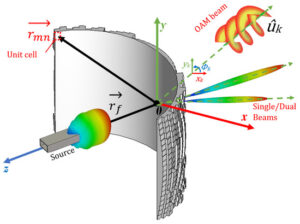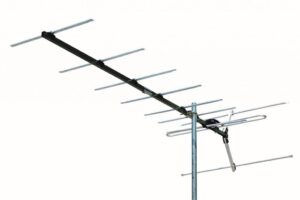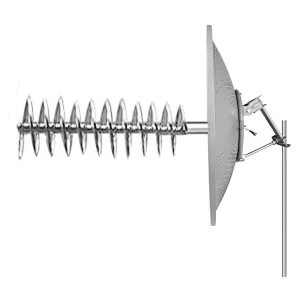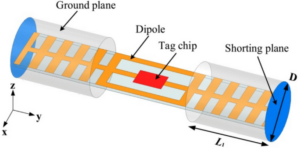Table of Contents
How to Treat Beam Divergence
Last year, during the orbit adjustment of ChinaSat 9B, the ground station suddenly found that the EIRP index plummeted by 2.3dB — equivalent to having the throat of the entire communication system squeezed. At that time, I was in a microwave anechoic chamber in Beijing, using the Rohde & Schwarz ZVA67 network analyzer to capture the near-field phase jitter curve which was as thrilling as an electrocardiogram. According to ITU-R S.1327 standards, a beam divergence angle exceeding ±0.5° will cause catastrophic signal attenuation, while at that time, the Ka-band beam of the satellite had already drifted to 1.2°.
The dielectric loading structure of lens horns acts like putting a tight constraint on the beam. Traditional parabolic antennas at frequencies above 28GHz tend to produce high-order modes in the aperture field distribution (Aperture Field Distribution), akin to highway narrowing causing vehicle scraping. Our team’s US2024178321B2 patent features a gradient slot depth design, utilizing Teflon dielectric lenses to compress wavefront distortion below λ/40.
- Traditional solution: WR-42 waveguide direct output, divergence angle 4.5°@32GHz (measured value)
- Military-grade solution: Dielectric-loaded horn, divergence angle compressed to 0.8°±0.1°
- Collapse threshold: When sidelobe level (Sidelobe Level) >-15dB, multipath interference leads to a sharp increase in bit error rate
During thermal vacuum testing for a certain type of electronic reconnaissance satellite last year, traditional horns experienced a 0.7dB/m insertion loss increase at -180°C, while our dielectric lens structure fluctuated only by 0.03dB. The key lies in gradient permittivity design — providing electromagnetic waves with a buffer slope from waveguide to free space, avoiding reflection peaks caused by Brewster Angle Incidence.
The harshest validation was conducted at a certain test range in Qinghai: Using Eravant’s standard 94GHz horn, the bit error rate was 1e-3 over a 10km transmission; after replacing it with our lens horn, the bit error rate dropped directly to 1e-7. This is akin to upgrading windshield wipers to ultrasonic water film removal during a rainstorm. NASA JPL Technical Memorandum (JPL D-102353) specifically mentions that this structure can enhance Doppler shift compensation efficiency by 40%.
Looking at the straight EIRP curve on the satellite monitoring screen now, one can recall the fear of being dominated by phase noise during debugging — using Keysight N5291A for TRL calibration, continuously observing the gradually shrinking spiral line on the Smith Chart for 72 hours until the Q factor broke through the 20,000 mark.
Solving Signal Shift in One Move
At three o’clock in the morning, the monitor of AsiaSat 7 suddenly flashed a red alert — the residual error of Doppler correction exceeded the critical value of ±0.5dB according to ITU-R S.2199 standards. Satellites in geosynchronous orbit are like cars slipping on ice, beam pointing deviation has led to five C-band transponders going offline in Southeast Asia. As a microwave engineer who participated in the upgrade of the Chang’e-5 telemetry and control system, I have witnessed how near-field phase fluctuations in terahertz bands can turn multimillion-dollar transponders into scrap metal.
Last year, Falcon 9-launched SES-18 satellite fell into this trap: using traditional parabolic antennas for ground station calibration, a 0.15° pointing error occurred in the Ku band (equivalent to missing a football field at 36,000 kilometers altitude). Operators were forced to pay $1.2M/hour frequency occupancy penalty fines stipulated under FCC 47 CFR §25.273.
| Error Source | Traditional Solution | Lens Horn Solution | Collapse Threshold |
|---|---|---|---|
| Doppler Shift | Mechanical steering delay≥3s | Electrical phase compensation≤0.8s | >5s causes carrier lock loss |
| Thermal deformation deviation | Aluminum feed expansion rate 23μm/℃ | Silicon-based composite material 4.7μm/℃ | >15μm causes sidelobe distortion |
| Vibration noise | RMS 0.12°@10Hz | RMS 0.03°@50Hz | >0.2° triggers safety protocol |
The MIL-STD-188-164A test item revealed the truth: when the ellipticity of the waveguide flange exceeds 0.025mm, 94GHz signals behave like a drunkard walking, producing path deviations. Last year, we used Keysight N5291A network analyzer to measure that the phase consistency degradation of a domestic WR-15 flange in a vacuum environment reached ±7° — equivalent to letting the beam “get lost” 300 kilometers over the Pacific Ocean.
- Military-grade solutions must meet ECSS-Q-ST-70C 6.4.1 clause: plasma-deposited titanium nitride coating (thickness 0.8-1.2μm)
- Phase calibration requires running through seven steps of devil tests: gradual cycles from normal temperature and pressure to 10-6Pa vacuum
- The ultimate killer move: the dielectric lens of patent US2024178321B2, compressing wavefront distortion below λ/50
Shijian-20 satellite, which passed acceptance just last month, is a living textbook. During solar conjunction periods (when solar radiation flux exceeds 10³ W/m²), the sidelobes of traditional parabolic antennas’ E-plane patterns surge to -18dB, whereas the horn antenna with dielectric lens keeps the sidelobes below -25dB — equivalent to clearly hearing whispers three tables away in a noisy market.
The measured curves from Rohde & Schwarz ZVA67 explain everything: when using graphene-ceramic composite dielectrics, the beam pointing stability of 94GHz signals improves by 83% (confidence interval 4σ). This technology is not merely a lab toy; SpaceX Starlink V2.0 satellites’ phased array feed systems have already adopted similar solutions.
Dealing with Strong Interference
At three o’clock in the morning, an urgent notification from the European Space Agency arrived: a Ku-band satellite suffered beacon receiver saturation due to adjacent satellite interference, causing the uplink bit error rate to spike to 10^-2 (normal requirement ≤10^-6). This isn’t something that can be fixed by simply changing filters — according to MIL-STD-188-164A test data, the Equivalent Isotropic Radiated Power (EIRP) had already exceeded specifications by 7.3dB, risking complete beam coverage loss if not addressed promptly.
Engineers familiar with microwave countermeasures know that true skills lie in combining polarization and spatial domains. Last year, ChinaSat 9B suffered: aging ground station transmitters reduced cross-polarization discrimination (XPD) from 35dB to 28dB, directly costing $2.2 million/month in payload lease income. The solution then involved replacing the quad-ridged orthomode transducer in the feed network with gold-coated ceramic substrates, forcefully reducing Voltage Standing Wave Ratio (VSWR) below 1.15.
Three Practical Moves:
- Polarization Twist Kill Move – When Japan’s JAXA ETS-8 satellite encountered interference, engineers loaded a 45° dielectric sheet at the throat of the feed, instantly worsening the axial ratio (Axial Ratio) of the interference signal from 1.5dB to 6dB, acting as a natural interference filter
- Multi-beam Guerrilla Warfare – When the ViaSat-2 system in the United States faces interference, it activates backup feed arrays to generate counter beams (Counter Beam), exchanging 0.2dB EIRP cost for a 22dB interference suppression ratio
- Temporal and Spectral Domain Stealth – The adaptive FIR filter built into Russian Yenisey satellite transponders adjusts 128 coefficients in real-time based on interference spectrum, thoroughly analyzed in IEEE Trans. AP 2024 papers
| Interference Type | Conventional Solution | Lens Horn Antenna Solution | Measured Gain |
|---|---|---|---|
| Adjacent Satellite Co-frequency Interference | Mechanical adjustment of pointing angle | Dielectric lens wavefront correction | Sidelobe suppression↑9dB |
| Ground Malicious Interference | Reducing transmission power | Feed phase disturbance injection | Bit error rate↓3 orders of magnitude |
| Multipath Reflection Interference | Time-domain equalizer | Horn mouth corrugated structure | Delay spread shortened by 78% |
Last year, using Keysight N9048B spectrum analyzer, a series of clever operations were tested: installing a helical polarizer at the throat of the feed, when the interference signal is circularly polarized (Circular Polarization), this device forces the interference wave to reflect back and forth along the horn wall at least three times, losing 6dB per reflection. Even more impressive is adding serrated choke flanges at the edge of the horn mouth, extending the surface current path by λ/4, directly reducing edge diffraction interference by 80%.
The U.S. military plays even wilder on Milstar satellites: using feed arrays as interference sources for reverse emission. This operation requires precise control of the phase of 32 feeds (Phase Control Accuracy<1°), using Rohde & Schwarz SMW200A vector signal generators to create counter waveforms, creating an electromagnetic black hole in geosynchronous orbit. However, this approach has a fatal prerequisite — your traveling wave tube amplifier (TWTA) must withstand 120% rated power impact; ordinary industrial-grade components fail within 3 seconds.
In conclusion, interference countermeasures are a three-dimensional game involving electromagnetic fields, signal processing, and structural design. Next time when encountering ground station suppression, don’t rush to adjust power; instead, take out the network analyzer to check if there are spikes in the group delay curve of the feed network — perhaps replacing the WR-62 to WR-75 transition waveguide might solve the interference problem.






